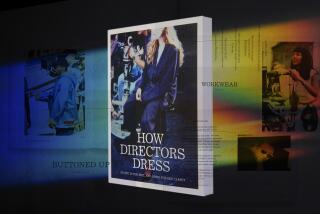You Receive an Invitation, but Can You Meet the Dress Code?
More women in Los Angeles are showing up at charity benefits outfitted like the Queen Mother. You know, when she looks as if she’s played “dress-up” with ruffles and ribbons and badges.
Or they look like Cher, or like Cher used to look when she (and America) first discovered her midriff.
Some women are done up to be presented at court. Others look as if they are in court on a misdemeanor charge.
Welcome to social insecurity, the current crisis in couture. And it’s all brought on by this year’s fad--an unbridled desire on the part of benefit committees to be cute. Rampantly cute.
“Dress jazzy”--that’s what the invite to this week’s “Round Midnight” premiere said.
Come on. What does that mean? And why should anyone know, since in the past several months invites to charity events have contained instructions that could only be followed by Elton John.
“Dress Hollywood chic,” “dress casually chic,” “dress upscale,” “dress Hollywood casual,” “dress dressy business,” “dress ruthless,” “dress for fun,” were some of the best. That was, of course, in addition to “black-tie” and that all-time paean to possibilities, “black-tie optional.”
Old charity hands know that “black-tie optional” is the dress equivalent of “almost pregnant.” It means everything and nothing. If you are a honcho with a tux or a full-length gown in your closet, why not wear it? If you are just some middle-level functionary, brought in to fill out a table bought by your company, show up and breathe. That’s optional enough. “Black-tie optional” simply means that the committee is afraid that “black-tie” will scare off some potential ticket-buyers.
But the recent rash of innovative instructions are really a brand-new bugaboo. In this era of mega-produced parties, the “dress this and that routine” is probably considered a swell idea by party organizers grabbing at any straw to separate their event from the other lucrative galas.
Instead, it brings on a flood of phone calls the day before the event, as women frantically try to figure out what it all means. That’s right--women. This invitation madness will probably be interpreted by future social scientists as an attack on women--much like the bustle and the chemise.
Tux or Don’t Tux
Men do not have a problem with what to wear, no matter what cutesy instructions are on the invite. They tux or don’t tux. If it’s casual, they take off their ties.
Hollywood stars are not affected by this dress dilemma. They show up as done up--as in Joan Collins--or as dressed-down--as in Jack Nicholson--as they want to be.
The really rich do not have this problem. Their question is merely whether to wear their dress diamonds or their sporty diamonds.
But just regular women have to figure out if it’s long or short, beaded or not beaded, ruffled or flourished, slacks or skirt, couture or costume. What happens is that women show up in such a variety of garb that no one feels comfortable.
Enough. For 1987, if charity organizers aren’t sure their ticket-buyers know what is appropriate to wear, let the invitations actually tell them. Black-tie, business or casual would seem to be perfectly adequate.
And if that can’t be done, let’s devise some way to make the men go through these couture contortions, too.
More to Read
The biggest entertainment stories
Get our big stories about Hollywood, film, television, music, arts, culture and more right in your inbox as soon as they publish.
You may occasionally receive promotional content from the Los Angeles Times.










